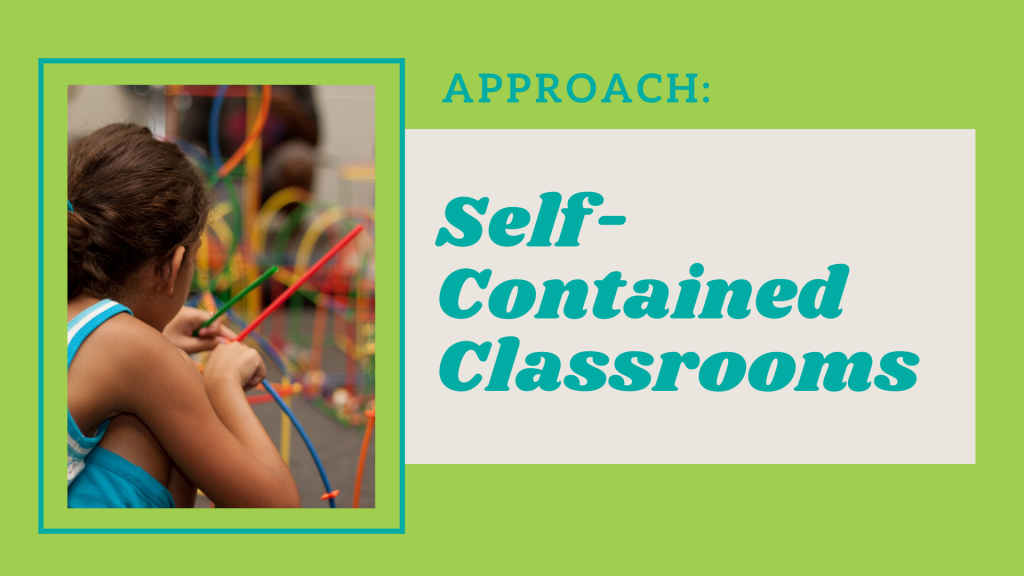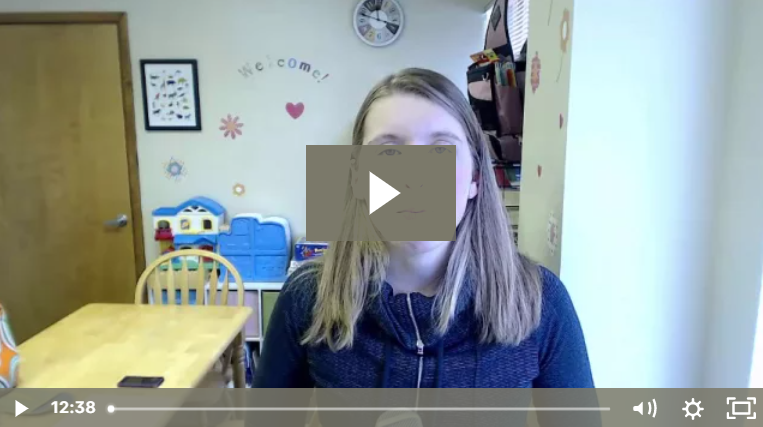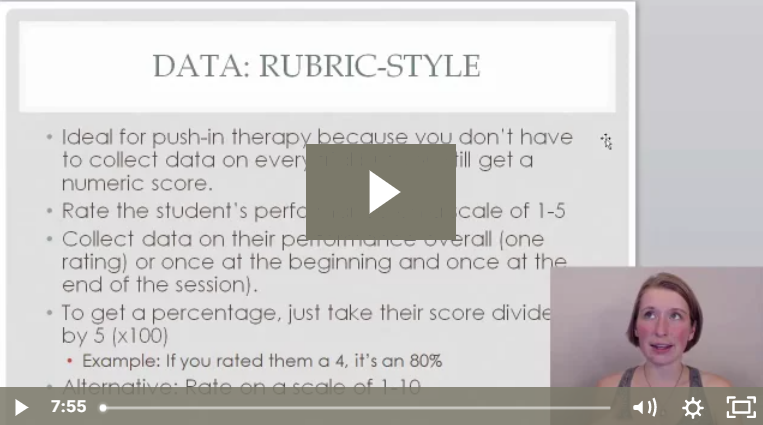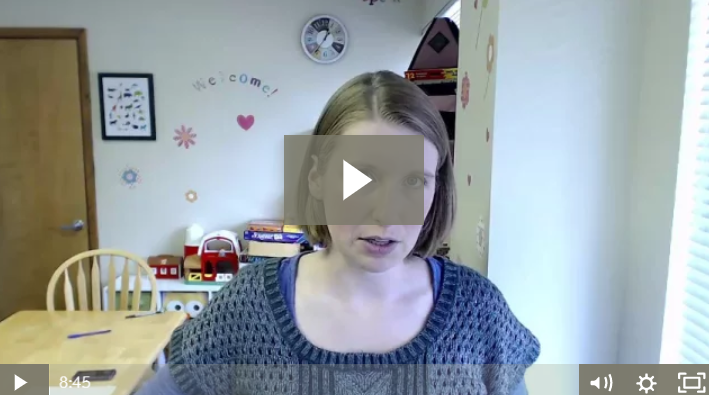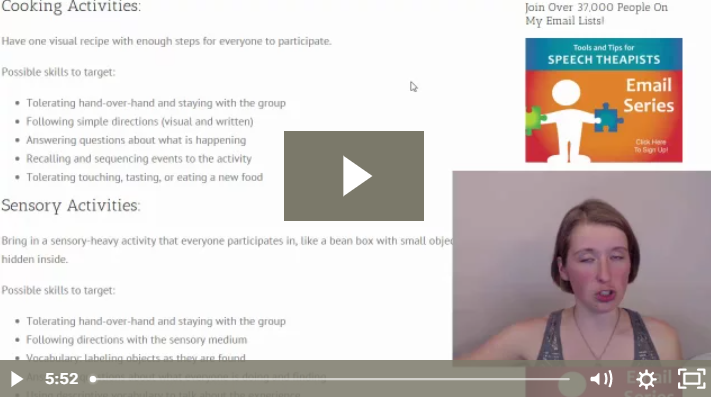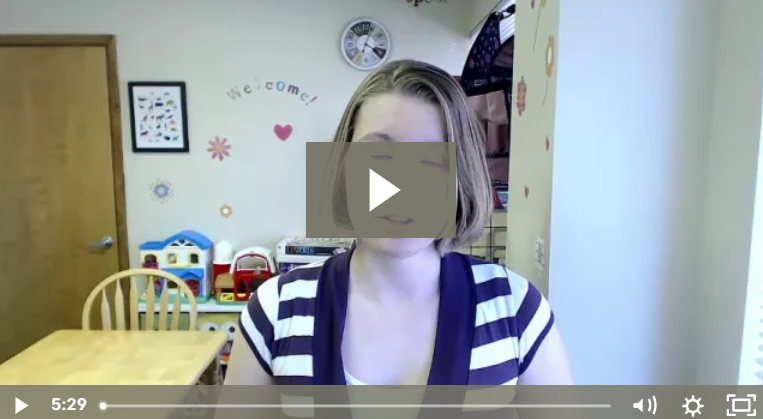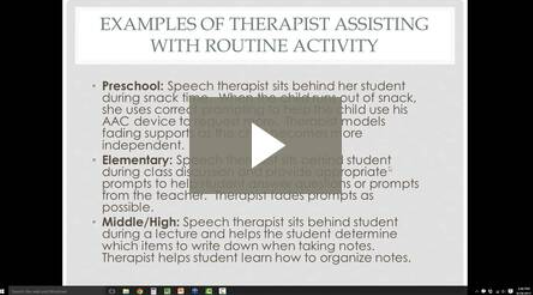Approach: Push-In / Classroom-Based Therapy
Description:
The Process:
Here are the basic steps for conducting push-in or classroom-based therapy:
- Choose a Skill: Decide what skill the child needs to work on
- Choose a Setting: Decide where is the best place to work on that skill for the child
- Choose a Type of Push-In Therapy: Decide which is the best service-delivery method for this skill in the classroom
- Design the Lesson: Now go about planning as usual but keep in mind the setting in which you will teach the skill
The Breakdown:
Now for some practical strategies and activities that you can do in therapy for each of these steps. Click on the task analysis level to drop down the list of activities:
First we begin with the skill. I don’t care if your administrator says, “We’ve heard that push-in therapy is the most amazing thing ever and YOU’RE going to use it!”. Too bad Mr. Administrator man, that’s not how it works!
First, we figure out what a child needs to work and and THEN we decide if it’s appropriate to work on it in the classroom. Because sometimes, it just isn’t!
So first things first. Write down the skill you want to work on during a particular session. Then, and only then, may you click on #2 below.
Ok, let’s examine this skill. There are a few things to consider when deciding if this skill should be worked on in a pull-out, therapy-room type setting or in the classroom. Think about these things:
- How well-established is the skill with this child? Is she just learning it or starting to generalize?
- How easily-distracted is this child?
- How hard is it for the child to transfer skills from one setting to another?
- What environmental factors are present in either location that will affect this child’s ability to focus and learn?
- What supports will you have in each setting?
You’ll use all of these factors (and more) to determine where the skill should be worked on. For more information about this decision-making process, watch the video linked at the top of this page.
IF you decide that this skill is appropriate to work on in the classroom, you may move on to step 3 below.
Now is the time that we decide what type of service delivery method will be best to present this information in the regular classroom environment. Here are a list of several different service delivery models that may be useful. For more information about how to use each of these methods, watch the video linked at the top of the page:
- Therapist-Led Lessons
- Co-Teaching with Co-Planning
- Therapist Takes a Center/Station
- Therapist Leads Routine Activity
- Therapist Leads Unique Activity
- Therapist Adapts Materials and Supplements
Instruction - Therapist Assists with Routine Activity
- Therapist Assists with Unique Activity
- Pull-Aside Therapy in Classroom
And now, we continue planning as usual! You will still consider the best way to teach this specific skill. You can use the task analysis pages here in this very database! And then you’ll think about how to plan those into the specific service delivery model that you’ve chosen above.
Related Topics:
Training Videos:
Need some extra help using this approach? Check out these related training videos:
Webinar Recordings:
Ready to dive deep? These hour-long webinar recordings will give you more information about this approach.

